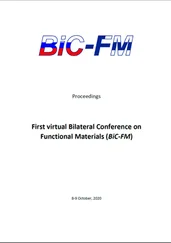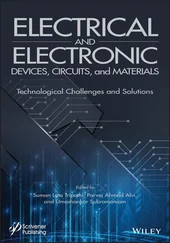1 ...6 7 8 10 11 12 ...23
1.6 Classification of HSCs
As enthusiasm for this kind of material has grown, a range of variations has been produced, but many of them make reference to the original (nonsensical) labelling ( v.s .). Consequently, there is a deal of confusion as to the nature of the various formulations and what behaviour might be expected from them. There are numerous products available now, and some systematic classification would be helpful to inform product selection. The chemistry is essential to understanding what is going on – how could it be otherwise? – and thus to enabling the statement of a simple, informative, and (most importantly) accurate classification. As already indicated, an HSC is defined by the reaction of a silicate system with water (a simple classification of HSCs based on their chemistry is shown in Figure 1.1). That silicate system might be a Portland cement‐like (PC) complex mixture (regardless of its provenance, i.e. whether it is derived directly from a commercial PC or created in a similar fashion from less‐contaminated feedstock) or a simpler calcium silicate (CS) or mixture of related compounds that has been synthesized for ‘purity’ (to avoid heavy metals) or for other reasons. We therefore have a very simple division into PC and CS. The main subdivision then is based on the water that is needed for the material hydration reaction. Some HSCs are to be mixed with water ( i.e. they are an aqueous mixture at the point of application), and some are presented as a slurry or paste in a nonaqueous vehicle, which is subsequently lost entirely, diffusing away. In the latter case, setting is still specifically hydraulic, as it relies on water from the surroundings ( v.s . re: drying) diffusing into the water‐miscible liquid continuous phase: the setting chemistry is essentially unaffected. (Incidentally, this gives the lie to the description of such products as ‘pre‐mixed’ – quite clearly, they are not, as no reaction water is yet present. Such a presentation is a rather neat approach, so why is it trivialized by a nonsense label? This is advertising, not science.)

Figure 1.1 Fundamental classification of hydraulic silicate cements at the point of use. The types referred to for clinical purposes elsewhere in this book are shown. Type 1 is the original formulation of the class, without any additive. All others have one or more additives of various kinds, for various purposes [19].
Whether or not a radio‐opacifier is added to any of these does not affect the fundamental behaviour: the essential chemistry – hydraulic reaction – remains as the defining characteristic, whether or not that additive modifies the setting reaction rate or outcome in any way (whether deliberately or accidentally, and no matter how drastically) [20]. Indeed, whether any other additive is included or the formulation is tweaked for any reason ( e.g. rate modification), the basic classification must remain if the key chemistry persists. Attempts to create ‘generations’ on a historical basis are as pointless as they are uninformative in the absence of logic, consistency, and relevance. There are no alternatives known at present for true HSCs, all of which are essentially based on CSs (as stressed elsewhere in this book).
The trouble is that what may reasonably be called ‘fake HSCs’ are also offered. Along the lines of compomer ( v.s .), a PC material powder in a light‐cured resin matrix has been produced: this is a filled (composite) resin (FR), no more, no less. It is simply irrational, and highly misleading (if not culpably misrepresented), to call this an HSC, or to imply that it is by association, irrespective of any beneficial effects, perceived or claimed, from a high pH at the surface, available calcium, and so on. If setting does not depend on water, it is not an HSC. In fact, water that does diffuse into the cured material (through the matrix, as is normal and expected for such resin systems, despite popular belief) must react with the PC material: such chemistry is unavoidable. Thus, one could reasonably expect this to expand (reaction product volume is necessarily greater than PC volume), with perhaps unfortunate results, albeit slowly – but this is not ‘setting’. Similarly, a PC‐ or CS‐containing material to be mixed with a salicylate‐containing second paste, setting by the usual acid–base (AB), salt‐formation process of many other proper cementitious materials, and not in the first place by reaction with water, cannot rationally be described as an HSC; to do so would be chemically false representation. Such a material is not fundamentally different from the old silicate cements that were mixed with phosphoric acid for setting, although they may be nearer to setting calcium hydroxide liners in the primary reaction. But here, again, water that must and will diffuse in must and will react in the usual way with any remaining core (and again cause expansion), but the setting mechanism as such is not at all that of an HSC. They may not be called HSCs, or suggested to be such.
It is possible to go on and dissect many more aspects of endodontic materials and treatments from a materials science perspective, most especially for the chemistry that is abused, ignored, or imagined. Were one not inured to a working life exposed to such, despair would follow rather promptly. Given that the role of all dentists, and thus of nonclinical teachers as well, is ultimately to ensure patient well‐being, the plea now is for the underlying science (and its practitioners, therefore) to be respected, given credit, and adopted as the means of supporting that motivation.
Critical reading and informed thinking can reveal much about the dogma, unwarranted assumptions, and wishful thinking (despite perhaps the best of intentions) that pervade endodontics at least as much as anywhere else in dentistry. Challenge it all – nullius in verba – and in so doing, with an open mind and sound advice, take the subject forward: true evidence‐based dentistry awaits your contribution.
1 1 Smith, R.M. and Hansen, D.E. (1998). The pH‐rate profile for the hydrolysis of a peptide bond. J. Am. Chem. Soc. 120: 8910–8913.
2 2 Kohli, M. R. and Karabucak, B. (2019). Bioceramic usage in endodontics. Available from http://www.aae.org/specialty/2019/07/08/bioceramic‐usage‐in‐endodontics(accessed 10 August 2020).
3 3 Lee, S.‐J., Monsef, M., and Torabinejad, M. (1993). Sealing ability of a mineral trioxide aggregate for repair of lateral root perforations. J. Endod. 19 (11): 541–544.
4 4 Torabinejad, M., Watson, T.F., and TRP, F. (1993). Sealing ability of a mineral trioxide aggregate when used as a root end filling material. J. Endod. 19 (12): 591–595.
5 5 Torabinejad, M., Hong, C., McDonald, F., and Pitt Ford, T.R. (1995). Physical and chemical properties of a new root‐end filling material. J. Endod. 21 (7): 349–353.
6 6 Darvell, B.W. and Wu, R.C.T. (2011). ‘MTA’ – an hydraulic silicate cement: review update and setting reaction. Dent. Mater. 27 (6): 407–422.
7 7 Fleisher, R.M. and Heintz, C.E. (1977). A plastic tube technique for direct vision of endodontic procedures. J. Dent. Educ. 4 (10): 630–632.
8 8 Prado, M., Santos Júnior, H.M., Rezende, C.M. et al. (2013). Interactions between irrigants commonly used in endodontic practice: a chemical analysis. J. Endod. 39: 505–510.
9 9 Basrani, B.R., Manek, S., Sodhi, R.N. et al. (2007). Interaction between sodium hypochlorite and chlorhexidine gluconate. J. Endod. 33: 966–969.
Читать дальше













